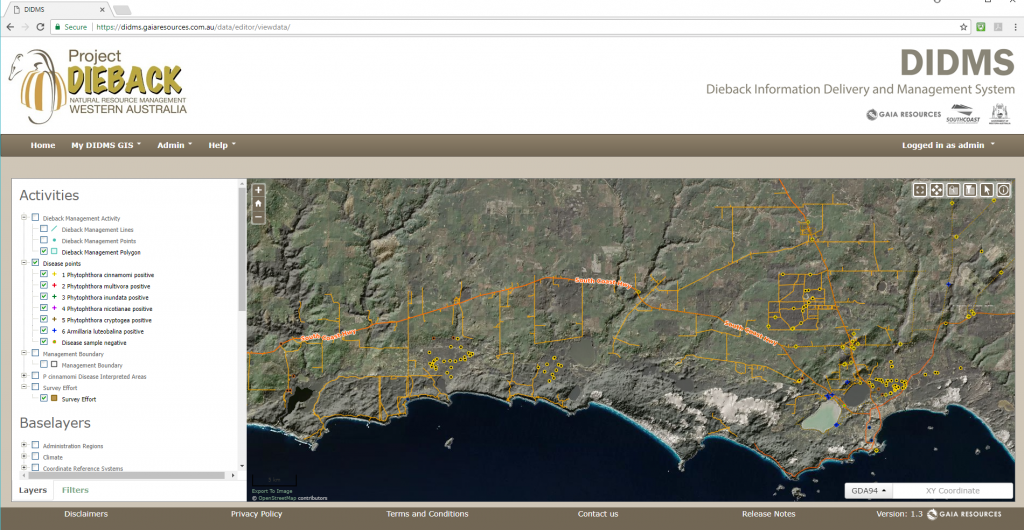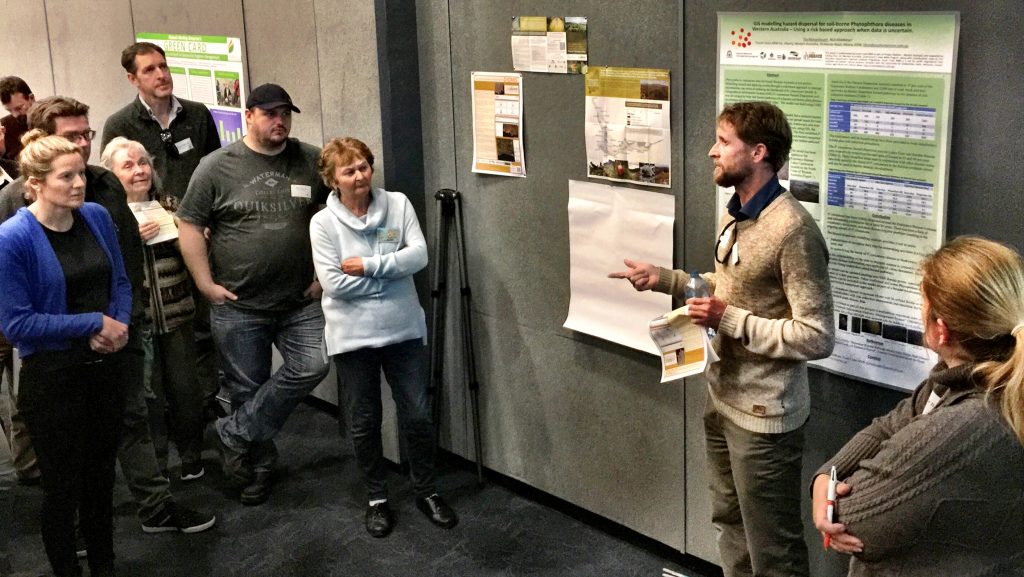I recently attended the 17th annual Dieback Information Group Conference 2018. Themed Working together – combating plant disease through collaboration. The focus of the day was on ‘how we can work together more effectively to manage significant plant pathogens impacting our cultural, environmental and other values’. DIG is the Dieback Working Group‘s (DWG) annual conference for industry, community, researchers and Government to share current programs, research developments and management tactics to combat native plant diseases, including Phytophthora Dieback.
After the warm and wise Welcome to Country by elder Gail Wynne, Cameron Crowe (Chair of the Dieback Working Group) provided a forward perspective of DWG. Key points in his talk included the confirmation that:
- there is no certainty of significant further funding for Project Dieback, but that
- the Group will continue to work closely with South Coast NRM, and that
- the Dieback Information Delivery and Management System (DIDMS) remains a crucial software platform into the future.
 The DIDMS Platform, based on our GRID product, is a crucial asset in the fight against Phytophthora dieback
The DIDMS Platform, based on our GRID product, is a crucial asset in the fight against Phytophthora dieback
The keynote address by Dr Richard Walley strongly highlighted the need for inclusion of indigenous knowledge in the management of country. This message was amplified further by Tui Shortland (Director, Te Kōpū – Pacific Indigenous & Local Knowledge Centre) who presented on ‘Indigenous Wisdom: Phytophthora and Kauri Decline’ and outlined the Cultural Health Indicator Framework as a more comprehensive measure of ecosystem health.
A series of excellent speed-talks had attendees moving about the venue, including Tilo Massenbauer’s (South Coast NRM) introduction to the DIDMS. It was apparent that many workers in the field had yet to evaluate the benefits of this powerful information system. We are looking forward to adding further facility to this system in the coming year by adding methods for Risk Hazard Assessment.
Tilo explaining DIDMS in the speed session
After a busy lunch, Karen Warner (Eastern Metropolitan Regional Council) came up with a brilliant statistic to introduce her talk:
“Volunteering is worth more to Australia than mining.
Volunteering in Australia is worth $290 billion annually.”
On reflection, I found five major take-away messages from the day:
- funding is being seriously reduced for the key agencies and alternate sources and strategies must be found,
- the community is diverse, committed and ready to take dieback management to the next level,
- indigenous knowledge has the potential to greatly contribute to the management and protection of our native ecosystems,
- a single flexible data management and sharing platform is needed for all workers in this field (which sounds a lot like DIDMS!), and
- social scientists need to research the barriers to communicating the need to care for and protect the country.
If you’d like to know more about how we can help you with research programs, data management or spatial information systems, then please leave a comment below, start a chat with us via Facebook, Twitter or LinkedIn, or email me directly via alex.chapman@gaiaresources.com.au.
Alex


Comments are closed.